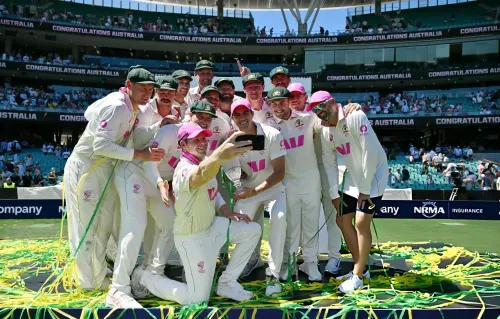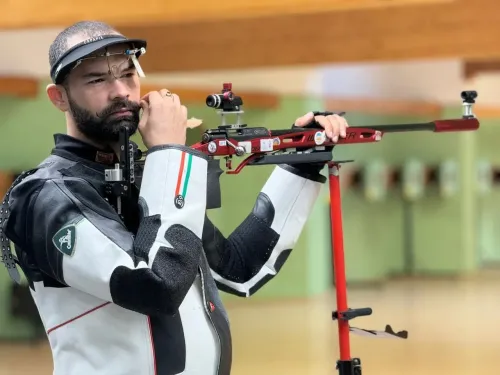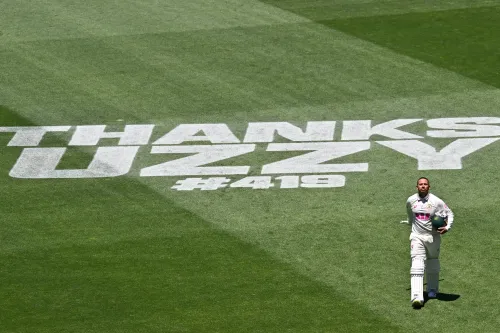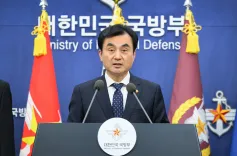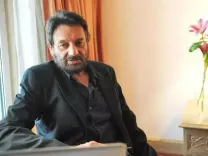Will India Women Test All Departments Before ODI WC?
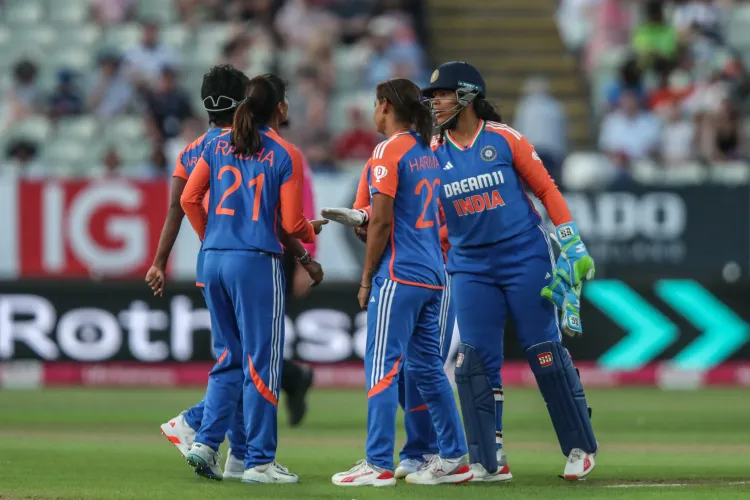
Synopsis
Key Takeaways
- India's batting lineup is strong, featuring several star players.
- Injuries to key players raise concerns about the bowling attack.
- Team composition is under scrutiny as they prepare for the World Cup.
- Experience of previous World Cups may aid in performance.
- Focus on refining combinations is crucial for success.
New Delhi, July 15 (NationPress) A vibrant victory in their inaugural T20I series against England has infused the Indian women's cricket team with a surge of confidence. However, as the three-match ODI series kicks off this Wednesday in Southampton, attention turns to India's readiness for the upcoming ODI World Cup, which they will co-host with Sri Lanka.
India achieved a remarkable 3-0 clean sweep against England in their previous ODI series held in September 2022. Former captain Anjum Chopra emphasizes that the team’s primary aim isn’t solely to secure another ODI series win, but also to meticulously refine its various combinations for the World Cup.
"If the goal is to become world champions, then I believe they will be testing every department—from the middle order to their finishing abilities, and assessing how their bowlers can adapt to the conditions, especially since we are somewhat lacking in the fast bowling sector.
"The absence of first-choice pacers can diminish confidence from an outsider's perspective. Nevertheless, I remain hopeful due to the number of matches they will play. Historically, Indian teams have shown an ability to 'flick a switch' and elevate their performance during World Cups," Anjum stated in an exclusive interview with IANS ahead of the ODI series.
With a powerful batting lineup featuring players like Harmanpreet, Smriti Mandhana, Pratika Rawal, Jemimah Rodrigues, Harleen Deol, and Richa Ghosh, India boasts significant batting strength. Nevertheless, the bowling attack, especially the lack of key fast bowlers, remains a concern, as Anjum previously highlighted.
Injuries to key players Renuka Singh Thakur and Pooja Vastrakar have raised questions, although Titas Sadhu is set to return after her injury during the ‘A’ team’s tour in Australia next month. In their absence, India will be looking to all-rounders Arundhati Reddy and Amanjot Kaur to lead the pace attack against England in the ODIs.
“It’s unfortunate. It’s an uncontrollable situation. It’s distressing that we cannot field all fit players in time for such a pivotal tournament. The tournament isn’t just around the corner, but this scenario is not ideal for anyone trying to field their best players,” Anjum expressed.
The lack of a sixth bowling option for ODIs compounds India's concerns regarding their bowling lineup, though Harmanpreet has pointed to Pratika as a potential solution.
“This issue has persisted for quite some time. We haven’t managed to address this gap. In this England series, we are hoping that top-order batters who bowl or other players can step up. If you glance at the top five or six, they seem unable to contribute beyond their primary roles, which isn’t the ideal approach,” Anjum added.
Since the last ODI World Cup in New Zealand in 2022, India has introduced 19 debutants, illustrating frequent changes in the team’s composition. Ten of these debutants have been spinners, with players like Saika Ishaque, Shreyanka Patil, Tanuja Kanwer, and N Shree Charani, who emerged as a standout in the T20I series, being selected based on their performances in the Women’s Premier League (WPL).
Amidst all this, the remarkable return of off-spin all-rounder Sneh Rana during the ODI tri-series victory in Sri Lanka was complemented by Radha Yadav stepping in for the injured Shuchi Upadhyay, showcasing impressive form in the T20I series win. While Radha performed well in the T20I series, Anjum believes her inclusion only following Shuchi’s injury calls into question the team’s inconsistent player selection strategy.
“Typically, you would promote one player for a debut. Here, we brought in two debutants for Sri Lanka, and they were on track for England. Had Shuchi not been injured, both would have traveled to England. If they hadn’t performed well, was the plan to drop them?”
“I find this perplexing. I understand the fast-bowling department lacks depth, necessitating a search for alternatives. Radha Yadav has traveled with this Indian team for an extended period before not being included in the squad.”
“Now she is back due to Shuchi’s injury. It’s thought-provoking that we revert to a debutant out of necessity. But to be fair, we must consider whether selectors had any viable options available. If not, then that’s reasonable,” she remarked.
India’s typical combinations in ODIs often prioritize batting prowess. However, when the injured fast bowlers return, will that change the overall combination, especially if the ODI World Cup venues feature batting-friendly pitches?
“It’s difficult to predict how things will align. If Amanjot is a valuable addition and has recently recovered from an injury, that’s promising. When will Renuka return to full fitness? If she does, how much workload can we place on her? Fielding 50 overs is demanding without impact subs in 100-over cricket. Is she truly back to full fitness, or should we stick with the current squad and find balance?”
“This isn’t the most favorable situation. It's challenging as we navigate through these uncertainties. However, those present must seize their opportunities and quickly grasp their roles; this could illuminate a path forward,” Anjum concluded.
Consideration should also be given to Yastika Bhatia, a long-time reserve keeper-cum-batter who missed out on the T20I series. “I want Yastika to be at her best. But how fit is she to reclaim her spot? She has faced injuries and has been in and out of the lineup.”
“She made her return after considerable effort, only to face injury again. Her last appearance was in Australia, and she hasn’t featured in the current lineup. Ideally, you want her in peak form.”
“However, I don’t believe the Indian team should be experimenting with players anymore. It’s crucial to identify the 12 or 13 players who you can consistently rely on and build from there.”
“This isn’t the moment for testing new players; it’s about establishing a solid foundation and ensuring we can consistently score over 300 runs or defend that total with our bowling lineup,” Anjum emphasized.
As the World Cup approaches, India must confront the daunting task of addressing gaps and refining their strategy before the global event. Time will reveal whether the nearly 13 remaining matches will adequately prepare them in terms of personnel and form for the ODI World Cup at home, their first since 2013.
“Consider this: if India reaches the final at a home World Cup, with everyone cheering them on—how often does an athlete experience such a unique opportunity? Should this be a source of stress or joy, knowing that fans are eagerly anticipating their success?”
“It’s a wonderful situation to be in as cricketers to have a home World Cup where people want you to win; that provides a unique pressure. It’s not about retreating; it’s about advancing,” Anjum concluded.



